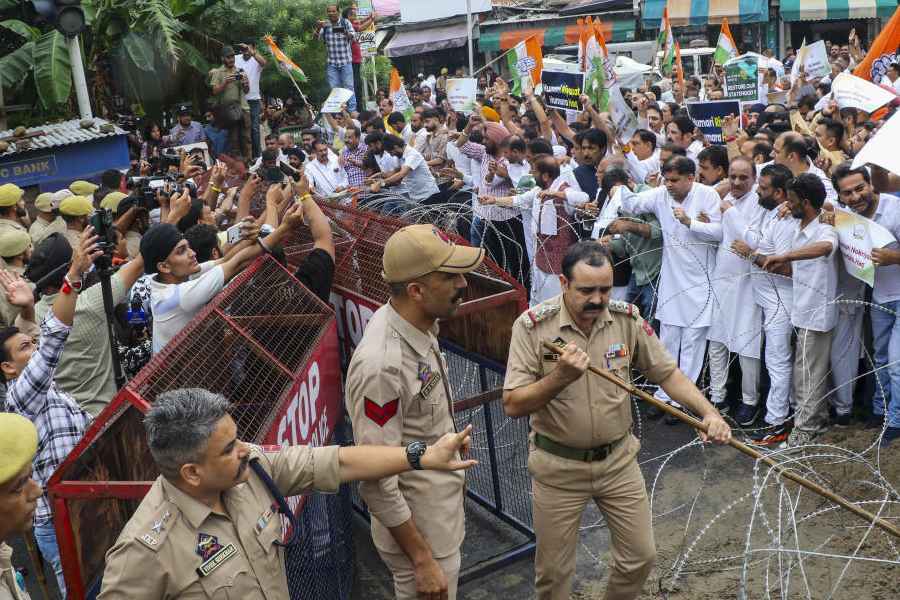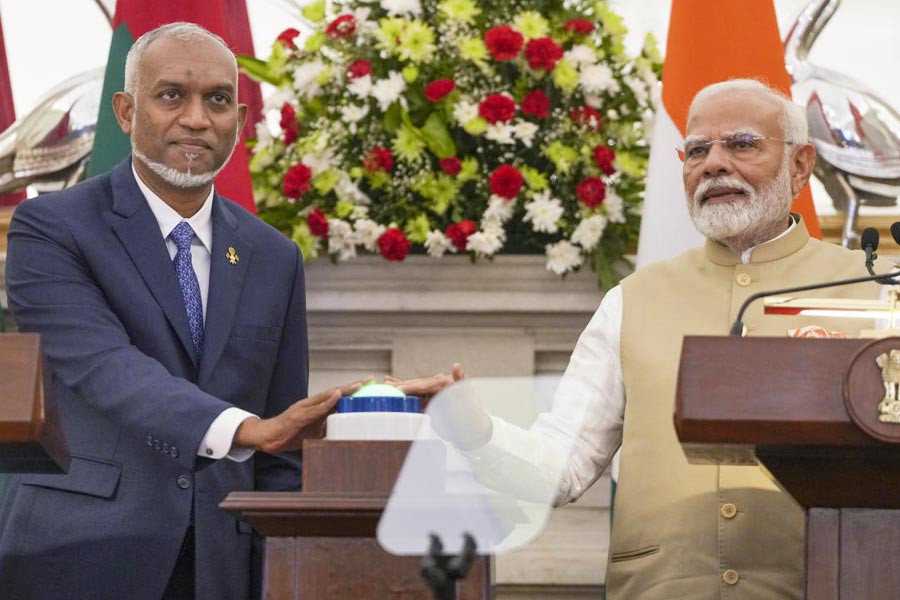|
|
Landscape painting was introduced in India as an independent genre with the opening of the art school in Calcutta in the 19th century when academic training was initiated. The exhibition, Art of the Land and Land in Art, Part I (Galerie 88, till August 14), takes viewers on a journey through the history of landscape painting in Bengal, right from Radha Charan Bagchi’s rather stiff depiction of the temple in Bodhgaya to its transformation in our times when it has little or no relation with the geography of a certain region.
Hemendranath Majumdar’s realistic watercolour depicting a temple in South India, Atul Bose’s typical Indian scenes in the European tradition and Jamini Roy’s post-Impressionist painting of a rice field evolve into Mrinal Kanti Das’s and Sudhir Ranjan Khastgir’s rigorous drawings of tree trunks reduced to their essential forms — vertical bars and roots splayed out like fingers.
Gobardhan Ash, better known for his sketches of the victims of the 1942 famine, reveals how responsive he could be to the delicate beauty of nature in Morning Light and the fury of a storm which he turns into a splatter of black paint. Most amazing is Ganesh Pyne’s untitled, small watercolour of 1955. Waves of blue mountains and chrome yellow ridges rise and fall to create a highly stylized glacial wasteland with a stream coursing across it (picture). Such undulating landscapes with a touch of what was known as ‘Oriental art’ were in vogue in the 1950s and even earlier, but Pyne’s stark vision transcends such trends and offers a rare glimpse into the romantic mind of this artist. He could have seen it in a dream, but it is not ‘Surrealist’ in an obvious way.
There are a few other artists here rarely seen today. Viewers, who may have wondered why he has produced numberless copies of his Radha, would be pleasantly surprised to see Suhas Roy’s delightful reverse paintings on glass. A tranquil Bendre landscape is being exhibited in Calcutta after a long time, as is a beautiful wash by Indra Dugar. Works of such high quality and grace are rarities today.
In etchings of uncharacteristic lyricism, Somnath Hore depicts a curvaceous young woman lying on a charpoy — presumably on a summer night — with an earthenware pitcher next to her. Palm trees keep vigil over an unspoilt Santiniketan, while Shimla is congealed on a chilly winter day.
Of the younger artists, Jayanto Mondal has a strong sense of design that is manifest in the orderly fashion in which he arranges the rows of trees along an avenue, and the patchwork quilt of cultivated land seen from a distance. Mondal makes striking use of red in his paintings that have the texture of tapestry.












